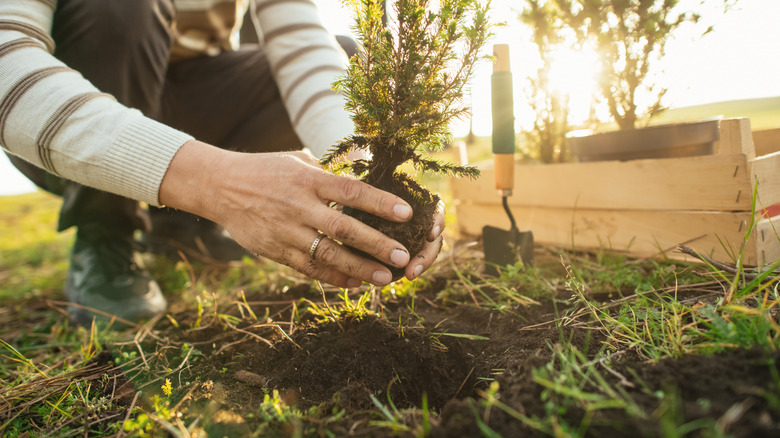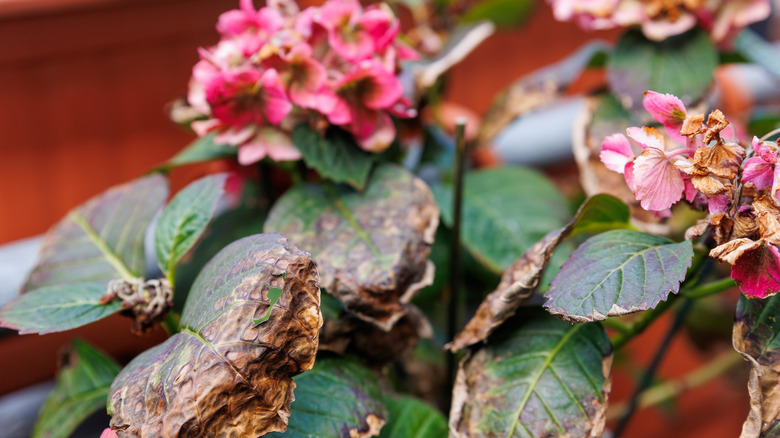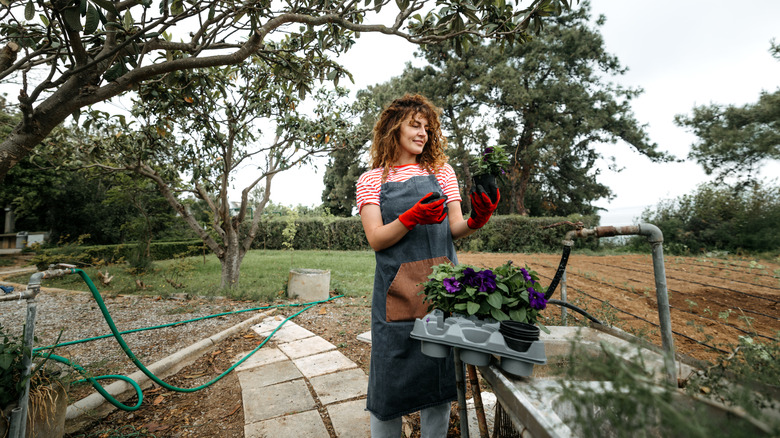You're Choosing The Wrong Time Of Day To Plant Your Garden
It's every gardener's worst nightmare. You bring a seedling home excited to start its happy journey and expand on your gardening repertoire. The plant looks fresh, healthy, and ready to thrive. However, seemingly moments after you plant it in the soil, it starts wilting and dying, and all you can do is scratch your head wondering where exactly you went wrong. The answer is often as simple as the time of the day. Planting during the heat of the day is probably the biggest mistake you're making that is stopping your plants from having healthy growth. In fact, since the plant is already prone to a number of stressors after transplanting, such as humidity, root disturbance, and infections, subjecting it even further to the scorching mid-day sun is definitely not the brightest idea. That's why you need to urgently switch your planting schedule to mornings or evenings or wait to plant altogether until a cloudy day.
Transplanting is not natural for plants. After all, we don't see a hydrangea bend down to the turf, drag its way out of the soil, pick up its wares, and move on to a better place for summers, do we? In fact, mudslides and bank erosions could be the only times something like this happens to plants in nature. If this process isn't approached with care, plants can suffer from chronic transplant shock and never recover. That's why timing becomes extremely crucial if you want to save your garden seedlings from transplant shock.
Planting during mid-day puts plants at a disadvantage
To understand why many plants struggle at first, it might help to think about planting as similar to dropping a young child at school for the first time. Before the seedling is planted in your garden's soil, it is in a nice and comfortable environment. It has received consistent water, the temperature is cool, no strong winds are testing its stems, and the sun is not beating down on its leaves every second. However, the moment you put the plant in the soil, it has to "grow up" to the harsh realities of existence, develop roots to satisfy its water needs, and compete with surrounding plants for resources and survival.
During this initial phase, if the plant also has to endure the hot afternoon sun, it may risk severe water loss through the leaves. As a result, the plant may end up closing the little pores on its leaves (also called stomata), forming a thick cuticle to prevent further water loss, and even enter a dormancy phase. Since transpiration through the leaves is crucial for maintaining temperature, the plant may overheat itself, and photosynthesis also slows down. This is evident from the outside when the leaves turn yellow, bronze, brown, or even white in some cases. The plant may recover from the shock or it may eventually die. But even if it survives the shock, its growth can remain stunted during the first few years.
Best time and practices for planting your garden
Apart from choosing the right time of the day (either mornings or evenings), it's also advised to consider planting during the cooler seasons, that is, the fall or the spring, to avoid heat stress. Roots take time to develop in a new environment, and facing the brutal summer heat during their first few months may be too much for your plants. Fall is especially optimum for regions that experience hot summers and mild winters, as this gives plants a long time to develop root growth. Whereas, for regions with harsh winters and long springs, spring time is ideal.
Besides following some simple tips to time transplants perfectly, there are a number of other hacks that can make the planting process smoother. For instance, you can try the milk jug hack that'll help with transplanting. Using a high-phosphorus nutrient solution for optimum root development works like magic as well. You can also use plants grown in decomposable peat pots to avoid damage to the roots. Just make sure the lip of the pot does not stay above the ground after planting, as it starts pulling moisture away from the ground like a wick. You should also remove the bottom of the pot to facilitate good drainage. Although some gardening enthusiasts and horticulturalists also recommend a "hardening phase" before planting, you can still go for a one-time transition if you make sure the plant is protected from strong winds and is watered optimally. Having said that, if the seedling has not been directly exposed to sunlight, you should acclimatize it with natural sunlight before bringing it out to your garden permanently.


